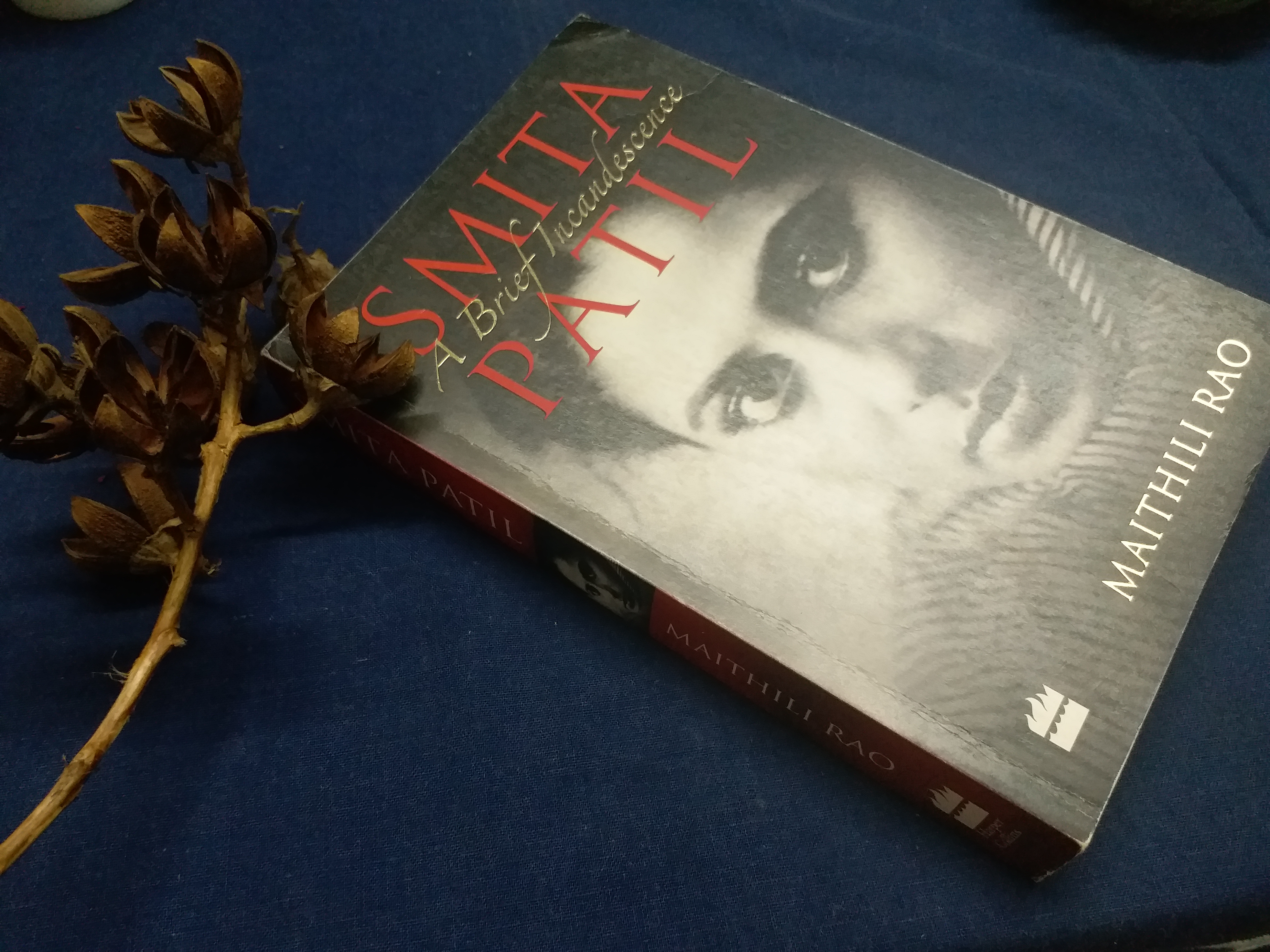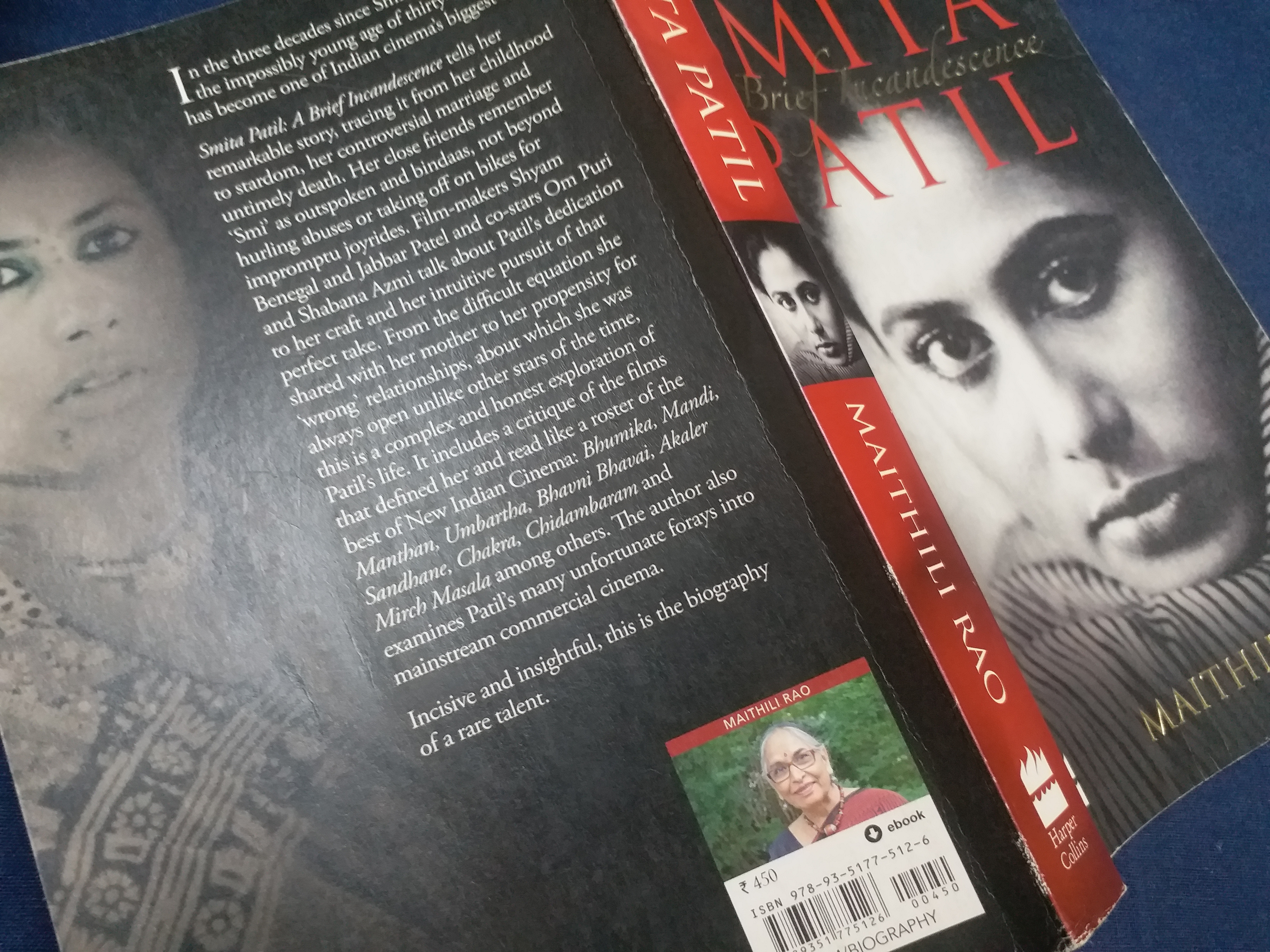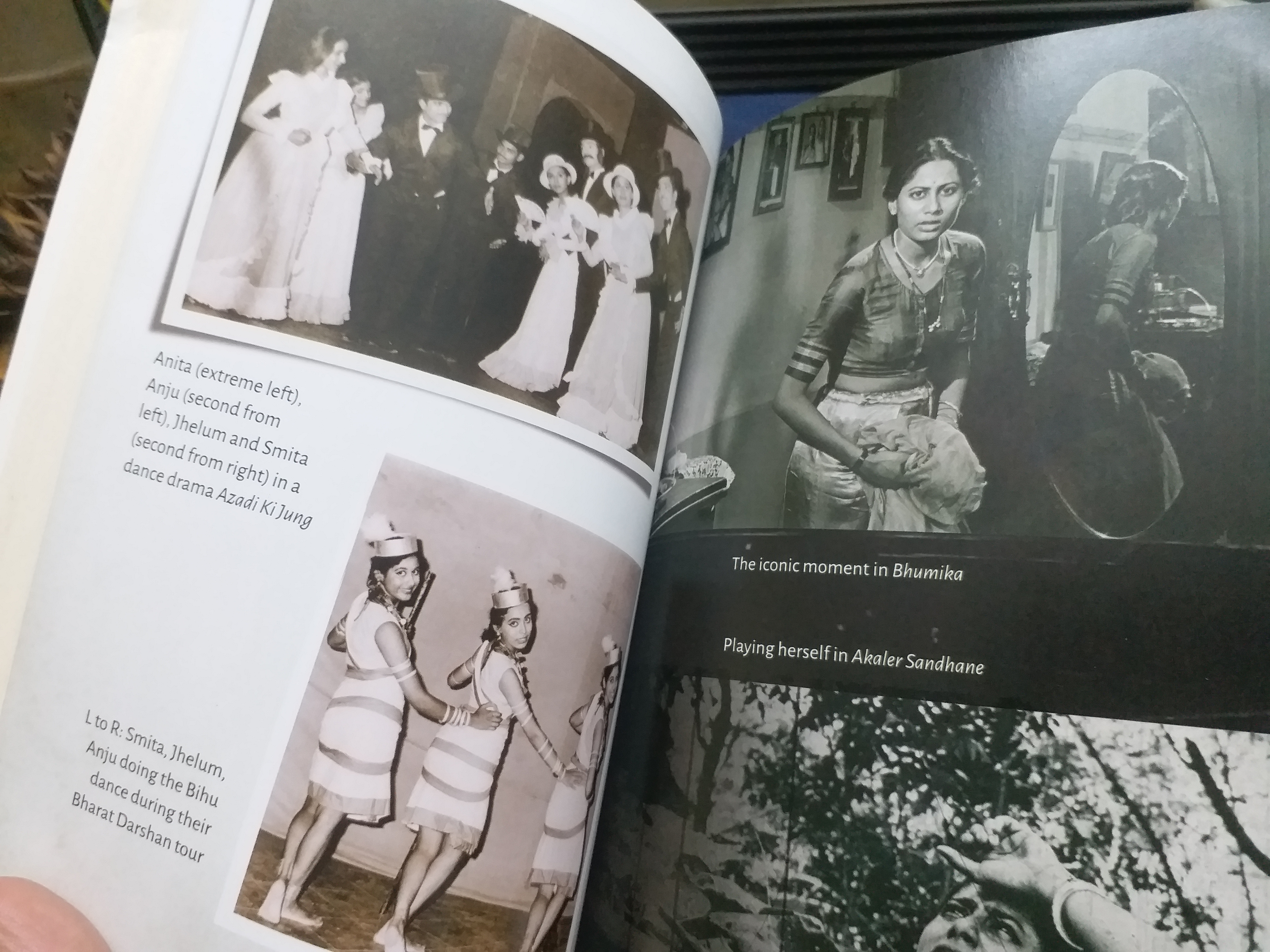

0


0

BOOK REVIEWS
By Dr. Vijaya Handa
18 January, 2019

 In her short life and career, Smita managed a wide gamut of earthy and complex performances, rendered with such intensity, empathy, and maturity that older and more experienced actors would find hard to pull off. And she was prolific - in a career that just stretched over a decade, she managed nearly 80 films, including some of the most path-breaking ever made in India - and some utterly dreadful, redeemed partly by her presence despite the atrocious dialogues, situations, and dresses heaped on her.
When she died at the impossibly young age of thirty-one, Smita Patil was indubitably one of Indian cinema’s biggest icons. As one of Indian cinema's most accomplished actresses, she personified intensity in her "parallel" cinema roles and a refined sensibility in mainstream ones, and in real life, was unpretentious, spontaneous, and daring, had hitherto been under-served as far as a comprehensive story of her life is concerned. Bringing together the stories of Smita the person and Smita the actress is a veteran film critic and writer Maithili Rao, who stresses that her attempt is not a "conventional biography" and neither a "collection of anecdotes" but actually recounting of Smita's life - on and off-screen - and assessing her "significant films in their context and from the perspective of distance that time has given us".
In her short life and career, Smita managed a wide gamut of earthy and complex performances, rendered with such intensity, empathy, and maturity that older and more experienced actors would find hard to pull off. And she was prolific - in a career that just stretched over a decade, she managed nearly 80 films, including some of the most path-breaking ever made in India - and some utterly dreadful, redeemed partly by her presence despite the atrocious dialogues, situations, and dresses heaped on her.
When she died at the impossibly young age of thirty-one, Smita Patil was indubitably one of Indian cinema’s biggest icons. As one of Indian cinema's most accomplished actresses, she personified intensity in her "parallel" cinema roles and a refined sensibility in mainstream ones, and in real life, was unpretentious, spontaneous, and daring, had hitherto been under-served as far as a comprehensive story of her life is concerned. Bringing together the stories of Smita the person and Smita the actress is a veteran film critic and writer Maithili Rao, who stresses that her attempt is not a "conventional biography" and neither a "collection of anecdotes" but actually recounting of Smita's life - on and off-screen - and assessing her "significant films in their context and from the perspective of distance that time has given us".
 I chose to revisit this book as I sat thinking of the impact those smoldering eyes had on a little girl.
Rao, who has been a long-standing columnist and contributor to various anthologies on Indian cinema, has been through - interacting with not only Smita's family (including her mother Vidya Patil who passed away some months before the book released), close friends and her most significant films' directors - Benegal (who has also furnished a brief but incisive foreword noting Smita's rise to rare heights as an actress in a film industry whose stereotypical demands and definitions of feminine beauty she never met), Jabbar Patel, Arun Khopkar (whose FTII diploma film was her debut), Ketan Mehta, Mahesh Bhatt, Ramesh Sippy, Saeed Mirza, Sandeep Ray (for his illustrious father Satyajit Ray's recollections) and many other actors - contemporary and modern - right down to Smita's faithful make-up man.
She however refrains from focussing on relationships, specifically her controversial marriage to an already-married Raj Babbar, since she never knew Smita's own version and Raj was not keen on talking about it (though she notes he made his peace with her family). Smita Patil: A Brief Incandescence, tells her remarkable story, tracing it from her childhood to stardom, controversial marriage and untimely death. From the difficult equation she shared with her mother to her propensity for ‘wrong’ relationships, about which she was always open unlike other stars of the time, this is a complex and honest exploration of Patil’s life. The book also includes a critique of the films that defined her.
Some interesting facets of Smita's life come to light - she was never a FTII student but was always thought to be so because she regularly hung out there, was fond of driving motorcycles and army 'jongas' (according to elder sister Aruna, she and her friend once drove one from Delhi to Bombay, including through the then badlands of Chambal - only being careful not to let her parents know), could give the choicest abuses when angered, a dab hand at photography, and very fond of children (and raising them). But that is not the point of this book that highlights Smita's best-known films, in which she invariably played a character dealt a bad hand by fate - in shape of caste, custom, economics, or relationships - but still fighting back, be it the feisty and fiery Bindu of "Manthan", troubled actress Usha in "Bhumika", free-spirited gypsy Ujaan in "Bhavni Bhavai", widow Amma coming to terms with the corrupting influence of poverty in a big-city slum in "Chakra", Hyderabadi woman Najma who amorally sells a younger innocent woman to an older husband in "Bazaar" to help her own uncertain love life, upper class woman with a burning conscience and service ideal Sulabha in "Umbartha/Subah", the free-living but conscientious love interest Roma in "Shakti", the fragile house-breaker Kavita in "Arth" and many others. Incisive and insightful, Smita Patil: A Brief Incandescence is an invaluable addition to film studies in India, bringing alive an entire era when cinema in India was truly different. It is also the definitive biography of rare talent and a haunting life. The book scores well on ethos, doesn't romanticize the actor, plays a fair balance between acknowledging the actress for her worthwhile not quite turning out to be a hero(ine) worship account.
I am telling you, this one is unputdown-able! Worth every word for a cinephile or a book lover.
For more book reviews and Authors, follow us on Facebook, Twitter and Instagram.
I chose to revisit this book as I sat thinking of the impact those smoldering eyes had on a little girl.
Rao, who has been a long-standing columnist and contributor to various anthologies on Indian cinema, has been through - interacting with not only Smita's family (including her mother Vidya Patil who passed away some months before the book released), close friends and her most significant films' directors - Benegal (who has also furnished a brief but incisive foreword noting Smita's rise to rare heights as an actress in a film industry whose stereotypical demands and definitions of feminine beauty she never met), Jabbar Patel, Arun Khopkar (whose FTII diploma film was her debut), Ketan Mehta, Mahesh Bhatt, Ramesh Sippy, Saeed Mirza, Sandeep Ray (for his illustrious father Satyajit Ray's recollections) and many other actors - contemporary and modern - right down to Smita's faithful make-up man.
She however refrains from focussing on relationships, specifically her controversial marriage to an already-married Raj Babbar, since she never knew Smita's own version and Raj was not keen on talking about it (though she notes he made his peace with her family). Smita Patil: A Brief Incandescence, tells her remarkable story, tracing it from her childhood to stardom, controversial marriage and untimely death. From the difficult equation she shared with her mother to her propensity for ‘wrong’ relationships, about which she was always open unlike other stars of the time, this is a complex and honest exploration of Patil’s life. The book also includes a critique of the films that defined her.
Some interesting facets of Smita's life come to light - she was never a FTII student but was always thought to be so because she regularly hung out there, was fond of driving motorcycles and army 'jongas' (according to elder sister Aruna, she and her friend once drove one from Delhi to Bombay, including through the then badlands of Chambal - only being careful not to let her parents know), could give the choicest abuses when angered, a dab hand at photography, and very fond of children (and raising them). But that is not the point of this book that highlights Smita's best-known films, in which she invariably played a character dealt a bad hand by fate - in shape of caste, custom, economics, or relationships - but still fighting back, be it the feisty and fiery Bindu of "Manthan", troubled actress Usha in "Bhumika", free-spirited gypsy Ujaan in "Bhavni Bhavai", widow Amma coming to terms with the corrupting influence of poverty in a big-city slum in "Chakra", Hyderabadi woman Najma who amorally sells a younger innocent woman to an older husband in "Bazaar" to help her own uncertain love life, upper class woman with a burning conscience and service ideal Sulabha in "Umbartha/Subah", the free-living but conscientious love interest Roma in "Shakti", the fragile house-breaker Kavita in "Arth" and many others. Incisive and insightful, Smita Patil: A Brief Incandescence is an invaluable addition to film studies in India, bringing alive an entire era when cinema in India was truly different. It is also the definitive biography of rare talent and a haunting life. The book scores well on ethos, doesn't romanticize the actor, plays a fair balance between acknowledging the actress for her worthwhile not quite turning out to be a hero(ine) worship account.
I am telling you, this one is unputdown-able! Worth every word for a cinephile or a book lover.
For more book reviews and Authors, follow us on Facebook, Twitter and Instagram.